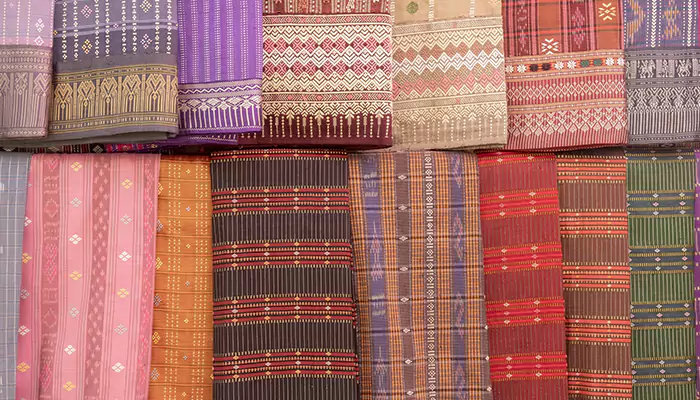
This trend is strengthening both domestic markets and India’s position in the global fashion landscape.
India’s regional handlooms, long regarded as heritage textiles, are experiencing renewed relevance in contemporary fashion. As consumers increasingly value authenticity, craftsmanship, and cultural storytelling, designers and retailers are integrating traditional weaving techniques into modern silhouettes.
India is home to over 136 distinct weaving traditions, each defined by regional materials, motifs, and methods. Examples include:
These crafts employ millions, particularly in rural areas, with the Ministry of Textiles reporting over 3.5 million handloom weavers across the country.
Domestic demand is supported by rising middle-class incomes and growing awareness of sustainable fashion. Internationally, Indian handlooms appeal to consumers seeking unique, ethically produced garments with cultural significance.

Designers like Sabyasachi Mukherjee, Rahul Mishra, and Anita Dongre have elevated handloom textiles onto international runways, often collaborating directly with weaving clusters to ensure authenticity.
The Indian government has introduced multiple schemes to promote handlooms, such as the Handloom Mark for authenticity and subsidies for loom upgrades. NGOs and cooperatives are also helping artisans access e-commerce platforms, allowing direct-to-consumer sales.
Modern interpretations of handloom fabrics include:
By merging heritage fabrics with modern tailoring, designers are expanding the market beyond ceremonial wear.

Handloom production generally has a lower environmental footprint than industrial textile manufacturing. Fabrics are often woven from natural fibers, and production is largely manual, minimizing energy consumption.
The ethical dimension—supporting artisan livelihoods—adds to the appeal among socially conscious consumers, particularly in export markets like the US, UK, and Japan.
Industry analysts project a steady rise in demand for handloom products, with growth in both luxury and accessible fashion segments. The success of this sector will depend on marketing, design innovation, and sustained investment in skill preservation.